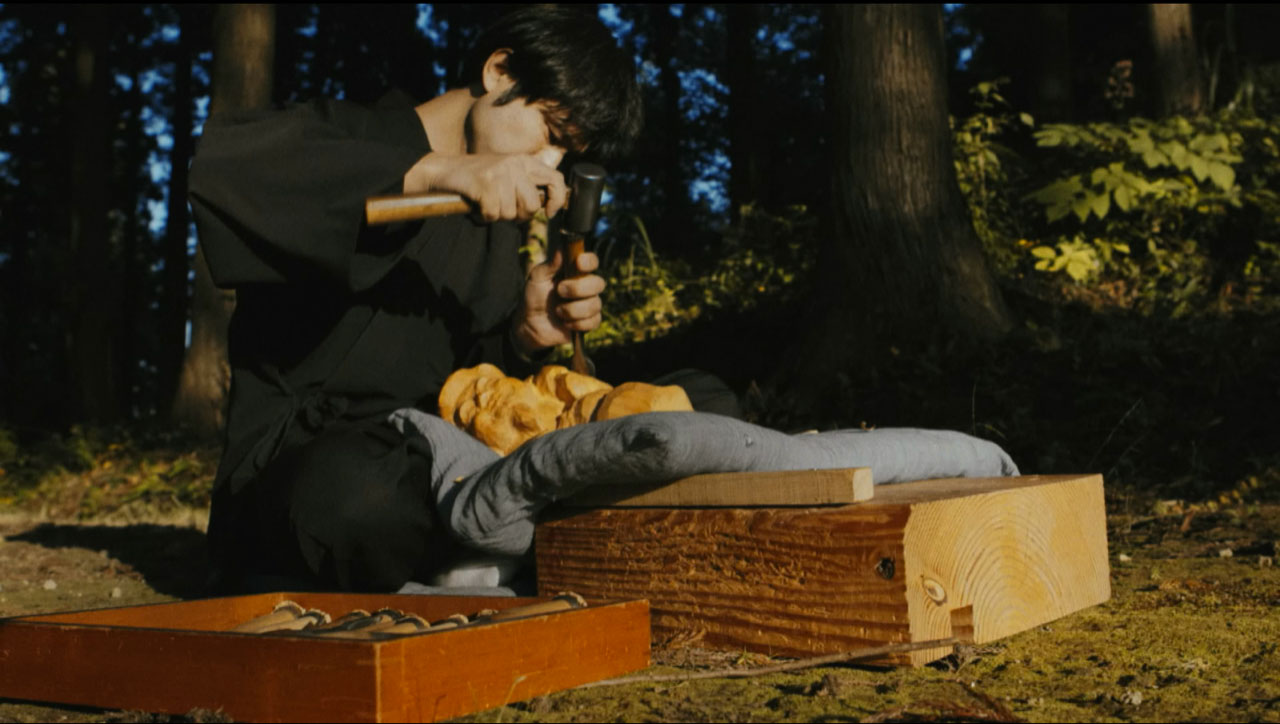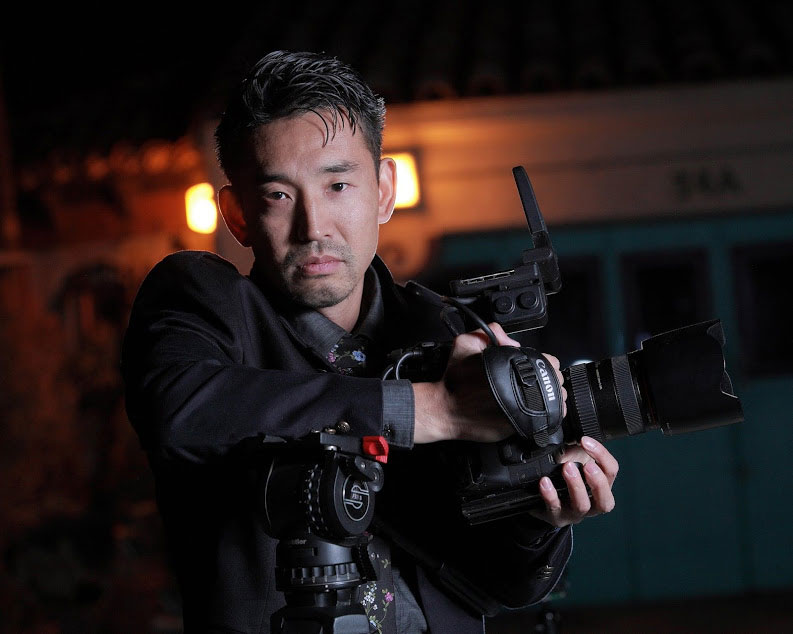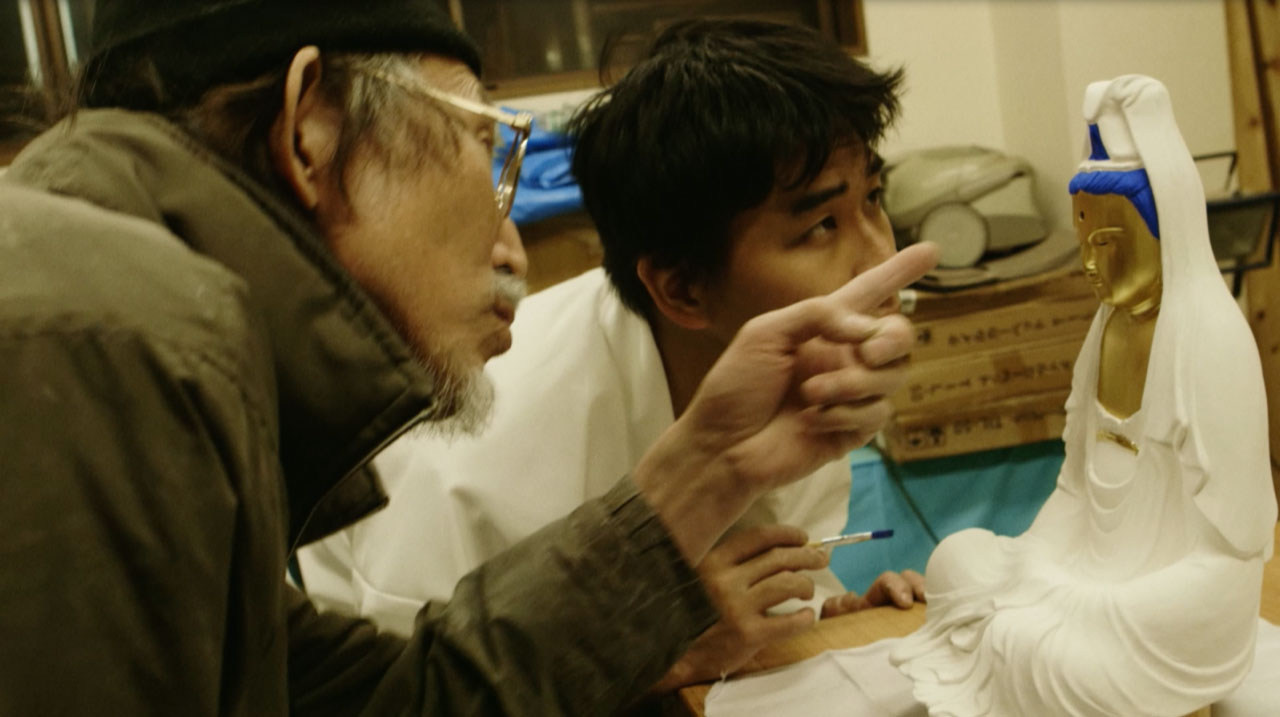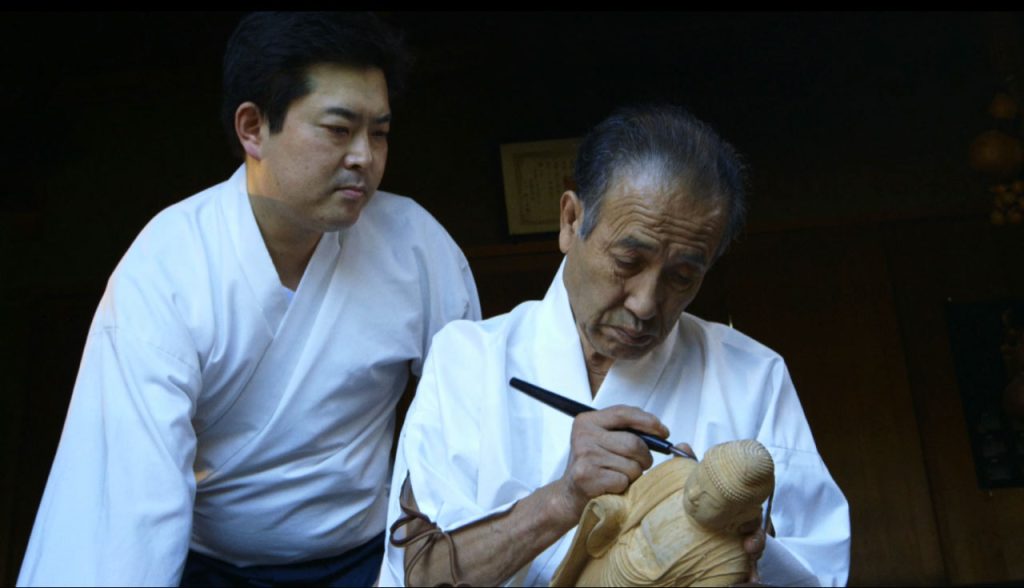To view a statue carved by the Busshi—a community of Japanese sculptors who create intricate wooden replicas of Buddhas and bodhisattvas—is to view a style of sculpture that has been virtually unchanged for nearly 1,400 years.
In Yujiro Seki’s documentary Carving the Divine: Buddhist Sculptures of Japan—which is currently available to watch for free as part of Tricycle‘s Film Club series—viewers get an inside look at how the Busshi have passed on their meticulous carving techniques from generation to generation. The film introduces us to Master Koun Seki, who has devoted his life to his craft while also running a school for apprentices and other emerging artists. Watching Master Seki interact with his pupils, viewers quickly learn that the craft requires immense dedication.
Tricycle spoke with Yujiro Seki about this ancient art form and its preservation.
How would you describe the traditions of the Busshi to those who are unfamiliar with this community?
Simply put, Busshi are the practitioners of a 1,400-year-old lineage of Buddhist wood carving that’s at the heart of Japanese Buddhism. The Busshi tradition was most likely introduced by the artisans from the Asian continent, one of whom was Tori Busshi, in the mid-seventh century. At first, the styles of Japanese Buddhist sculptures were very similar to their contemporaries from China and Korea, and the primary material they used was bronze instead of wood. But around the 11th century, because of Japan’s diplomatic break from China and the advent of a legendary Busshi named Jocho, among other factors, Japanese Busshi began producing their own style, called Wayo style.

Even today, the craft of a Busshi differs considerably from Western notions of creativity. Busshi are almost always required to create the exact figures that have been established by generations of predecessors—though Carving the Divine features one great exception to this rule. This rootedness in tradition has led to an almost unbelievable level of technique and stylistic refinement among Busshi. Throughout history, Busshi have worked closely with the government, temples, wealthy patrons, and middle-class laypeople. Undoubtedly, the Busshi tradition is one of the greatest legacies of Japan.
What inspired you to create a film about these carvers?
Making a documentary about Busshi was the last thing I had in mind when I was younger. I am a son of a butsudan (Buddhist altar/furniture) maker. When I was little, I was surrounded by Buddhist objects: furniture, statues, incense, shrines, and so on. My father took me to temples all the time, where he’d meet with clients, so I didn’t think there was anything special about the environment I grew up in. It was just a part of family business.

When I became a young adult, I grew fascinated with the art of cinema and came to the United States to pursue the path of a filmmaker. By being so far away from home, interacting with people from different cultures and seeing different kinds of art, I finally realized that the environment that I grew up in was special, and developed a new appreciation for Buddhist art.
I found that modern Busshi would be the perfect subject to put my heart into. Though many aspects of Japanese culture have been appreciated by the Western world, the Busshi tradition remains virtually unknown outside of Japan. Since my family had been in the Buddhist furniture and statues business for so long, I had access to the Busshi world. I knew my Japanese identity would allow me to make a movie few others could, and believed my American sensibility help me share it effectively with a Western audience.
Do people training to become Busshi spend a lot time studying Buddhist teachings and texts?
I’m sorry to dispel idealized notions of the Buddhist carver, but at least in initially developing one’s craft, having a deep understanding of Buddhism has nothing to do with becoming a successful carver.

In order to complete the “hard training,” as it’s called, having talent, patience, and perseverance are basic prerequisites. But I did find it interesting that, just like learning a language, the younger the apprentice, the faster he or she was generally able to learn about this craft. If you become wrapped up in your ego and refuse to suppress your anger and disobey your master, you make little progress and will quickly be dismissed. The only way to survive is to diligently listen to your master even if you think they are wrong. So whereas I didn’t see much connection between pupils’ purported passion for Buddhism and their success at carving, the Buddhist values of patience, of overcoming the ego, and the conscious negation of suffering would all be very valuable to a Busshi in training.
How do novices adapt to this lifestyle where they are expected to be so obedient?
The Busshi culture is the epitome of a micro-authoritarian society, where the hierarchical structure is firmly established and there is no place for negotiation. The master holds power almost like that of a god. You must always obey your master—period. Below the masters, there are various degrees of seniors. If you are a novice, you cannot disobey the seniors. If you’re bullied you can talk to your master, but most of the time you must tolerate unreasonable living circumstances. It is common for novices to not even be allowed to work on wood, but constantly be kept busy with menial work for a quite some time.
Yes, the biggest challenge is to suppress your emotions, go with the flow of things, and accept the tradition as it is.
I was struck by one quote by one of the senior sculptors who essentially says that younger artists should try their hardest to attract foreign interest in their work because Japanese people tend to overlook Buddhist art, as they are desensitized to it. Have you found that to be the case?
Though this statement could be a mere opinion of one person, I believe it contains some brutal truth. As Japanese people, we grow up with treasures around us—to the extent that it’s hard to appreciate them because we see them all the time. I am a perfect example of this: I grew up seeing Japanese Buddhist objects more than an average Japanese person because of my family’s business, and I didn’t have any appreciation for them, because while they were amazing, they were also so familiar. It wasn’t until I left Japan, lived abroad, and saw Japan from the outside that I developed a new appreciation for Buddhist art.
Related: Kamakura Craftsmanship
It’s very difficult for Japanese people to see what’s truly in front of them in these sculptures. And the fact there’s still a craftsman occupation called a Busshi—artisans who make and fix these sculptures—never even crosses the mind of most Japanese people today.
Nonetheless, this is an artistic tradition that needs to be more widely appreciated to be kept alive. So I think this statement by the Busshi in the film is not about forgetting Japanese opinion and only seeking the approval from abroad, but leveraging recognition from abroad to remind Japanese people of the treasures that lie in front of them.
Update (1/23/2019): Yujiro Seki has changed the name of his documentary from Carving the Divine: The Way of Būshi, Buddhist Sculptors of Japan to Carving the Divine: Buddhist Sculptors of Japan. He has also switched the English spelling of the Japanese word Būshi in his film to the more commonly used Busshi. (Not to be confused with bushi, another term for samurai.) The article has been updated to reflect these changes.
***
This article was originally published on June 1st, 2018.
Thank you for subscribing to Tricycle! As a nonprofit, we depend on readers like you to keep Buddhist teachings and practices widely available.
